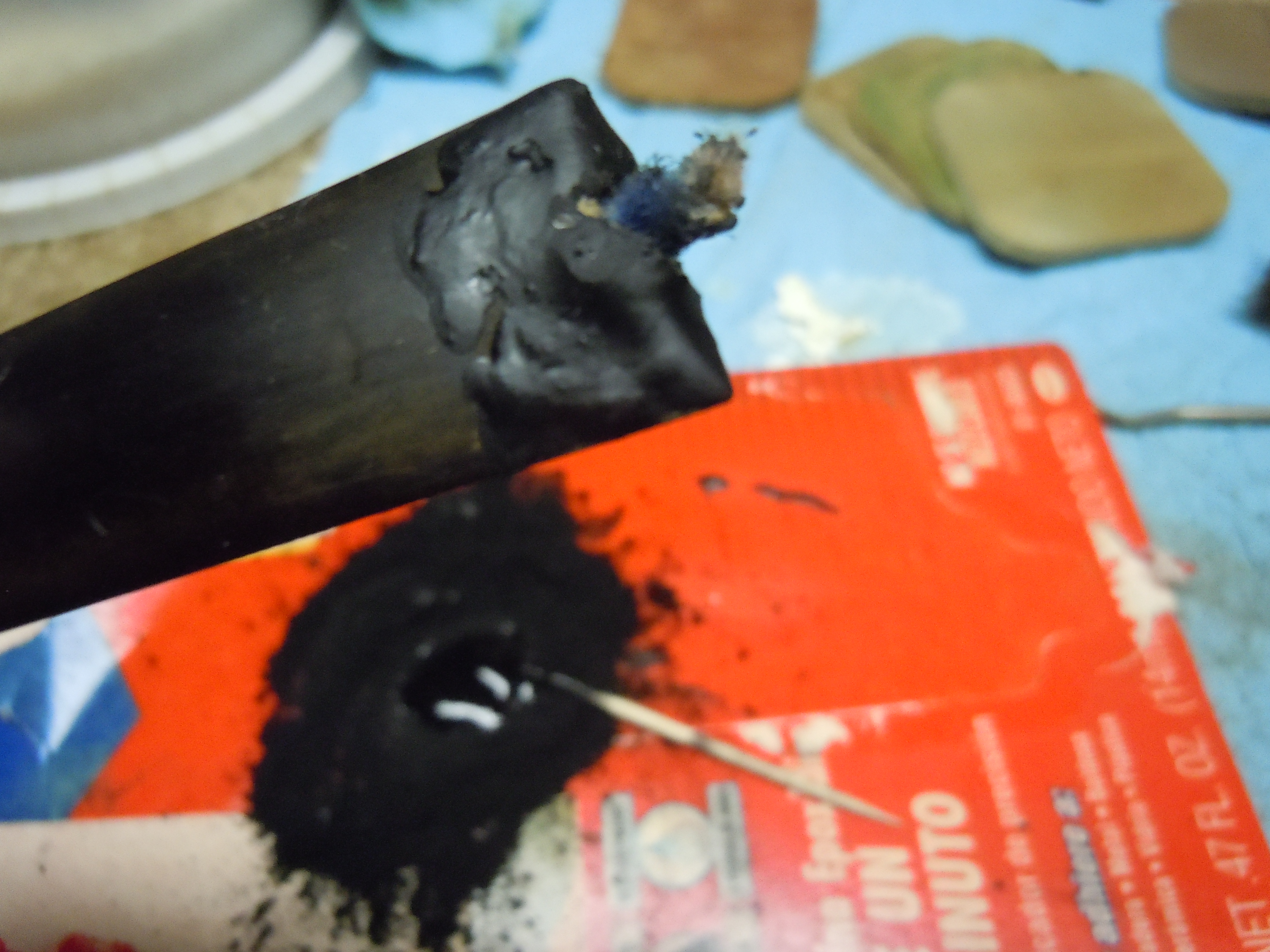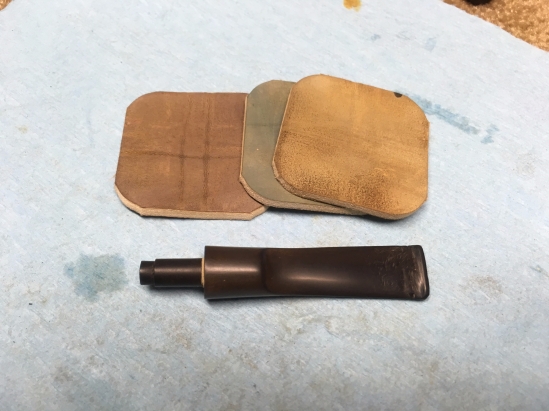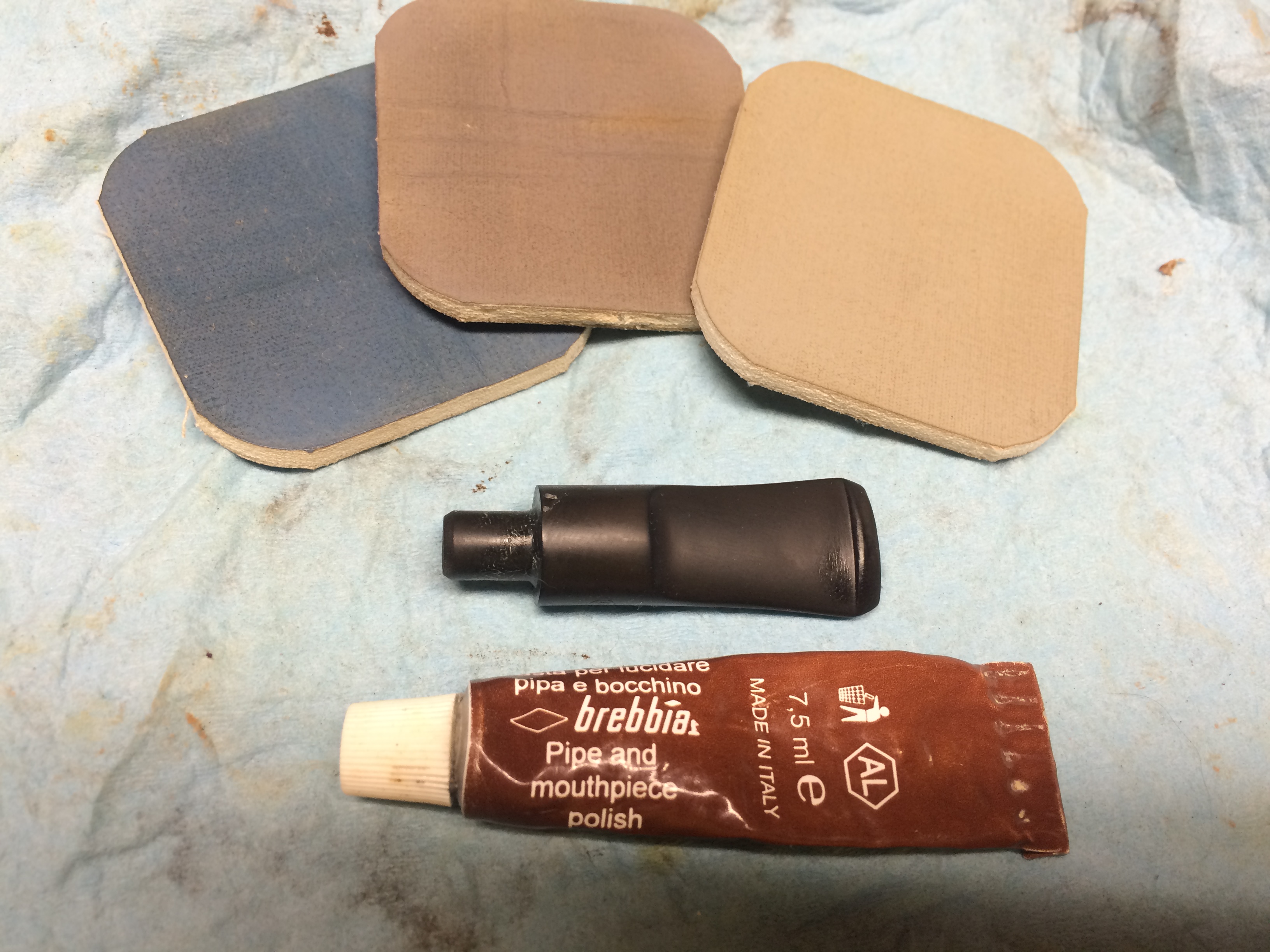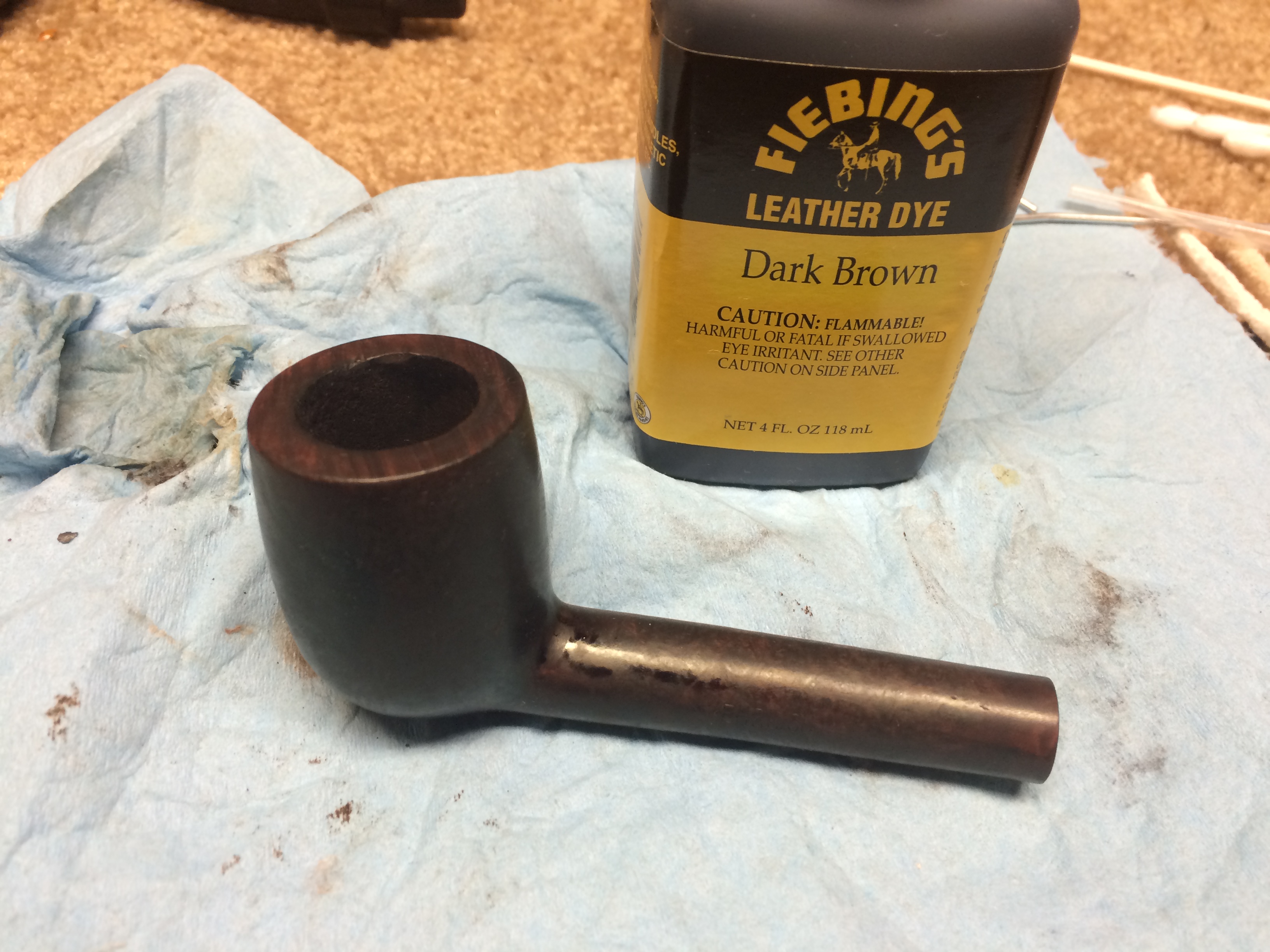
Fixing a mistake made during the original Reserection!
When I did my original restoration of this pipe I made a BIG mistake and learned a valuable lesson. NEVER use super glue to make a stem tight!! The stem after I was finished with it became loose. My reasoning was that if I were to build up thin layers and allow it to dry it would make up the slack and tighten the fit. Using the super glue and an accelerator I had sprayed the metal stem insert with the accelerator and then put several thin layers of super glue on it and let it dry overnight before putting the stem back into the bowl. At the time it fit well and did it’s job. Then the fun began… After some use the heat of smoking it must have activated the glue back up and it affixed itself to the shank.
The pipe needed to be cleaned but the stem would not come out of the shank. I tried to seperate it in a number of ways to separate them. First I put it in the freezer to try and let it shrink and that failed. Next was to go the other direction and use heat, a paint heat gun set on low. That worked sorta… Instead of loosening the metal part of the stem from the shank the back end which was in the vulcanite came out! Argh… So after some coaxing with the heat and putting it back into the freezer the metal then shrunk and released. Yea! Now What?? Now I was right back where I started from.

I’d never been in this position of having to decide to build up the inside of the shank or come up with another option. So I reached out to the one resource I know, Dr. Steve Laug Reborn Pipes, pipe restorer extraordinaire! I sent Steve an email letting him know the situation. Steve called me the next day! WOW! I was humbled that he would answer me let alone call me. Thanks Steve.


Steve asked me to send him a couple of pictures and let him see what I was talking about. I attempted to send him a link to my Google Drive to let him see a few pictures and a video as well. He wasn’t able to get full access but saw enough to make a recommendation. He suggested I call Tim over at J.M. Lowe, pipe restoration tools and parts and order a Delrin tenon to make a replacement tenon for the stem. This way I could retain the WDC Triangle inlay in the side of the stem.
Tim took my call and was very helpful. I asked several questions and he recommended the 5/16″ Delrin tenon. He said to be careful with the application of heat as the Delrin would not react well to it. He also recommended I use Medium Superglue to make the repair. The superglue was to be used without an accelerator as it would react too quickly and not allow the Delrin tenon to set the vulcanite stem. Tim sent the tennon out to me and I received it two days later.
Now for the work. Using my drill I decided to sand down the new tenon to make it a press fit. I thought this would be the better way to go. I may have approached this wrong way round but still wanted to make sure that the tenon fit tight first. Then I could make it secure in the stem and adjust the length. I started with 120 grit sandpaper and moved up to 400 grit. Then with sanding sponges I began with 1200 grit and wet sanded through 4000 grit. I moved along up to 12000 grit to make it smooth.


To check the fit I made sure it was snug but not too tight. Once I was comfortable with the fit in the shank I moved on to the stem. Holding it in clamps and sandpaper I made sure it was straight. I then inserted a pipe cleaner into the stem through the tenon and allowed it to stick out a little. This was done so that the airway remained clear. A good amount of the black medium super glue was applied, coating the base of the tenon and inserted into the stem. Twisting the pipe cleaner to make sure it was not bound I set up the clamp rig. I used the sandpaper to hold the stem without having to get it marred by the clamp.

One thought that came to mind a little too late was to place some vaseline on the pipe cleaner to make sure that it didn’t glue the cleaner to the inside of the repair. Luckily it stayed loose and free. I set it aside to setup overnight.

My apologies for the quality of the pictures. I’ve moved and still don’t have my workbench set up yet. The mess of pipes in the background was a batch of pipes that were in need of cleaning.
Because I used the 5/16″ tenon I needed to remove a small amount of the briar from the shank. I used a drill bit and a hand held holder to slowly remove the briar. The fit to the bowl was good. The shank is very thin and using a power tool might have destroyed it.

After all was set I gave it a good buff on the wheel and hand polished the pipe with an old terry cloth rag. The purist here will note that the stem logo is oriented on the wrong side. One of the unintended consequences of the replacement tenon was that the fit on the stem was off just enough to make the two facings between the shank and stem to misalign unless rotated over 180°. Another lesson learned, note to self, make sure markings are correctly aligned prior to gluing.


By opening up the shank and the stem with a drill bit the performance of the pipe was improved. The initial smoke after the repair was better than when it was originally restored.
Thank you for taking your time and reading my ramblings. Since it’s been more than 2 years since the last posting I’m rustier than I thought. Well, if my hunting for some new pipes to restore is successful I promise to do better in the future.







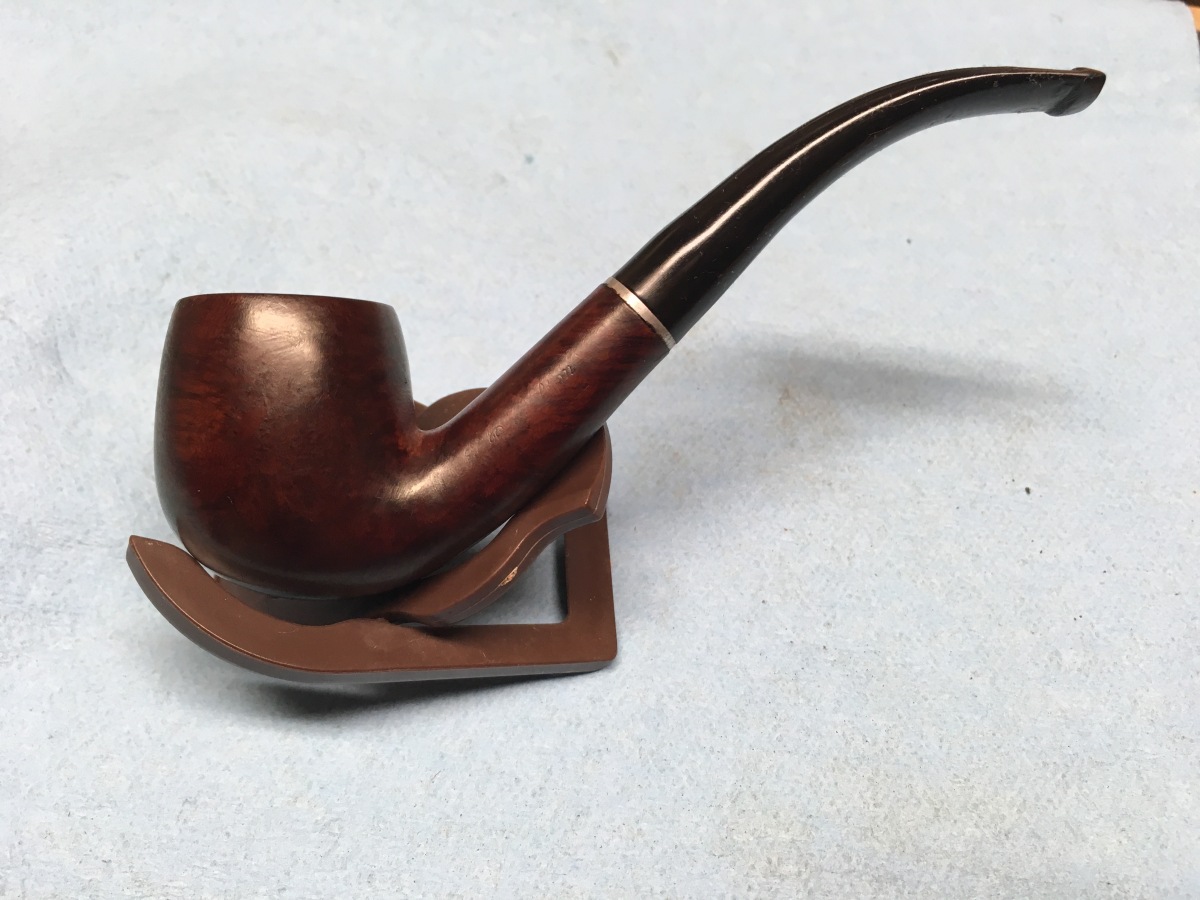












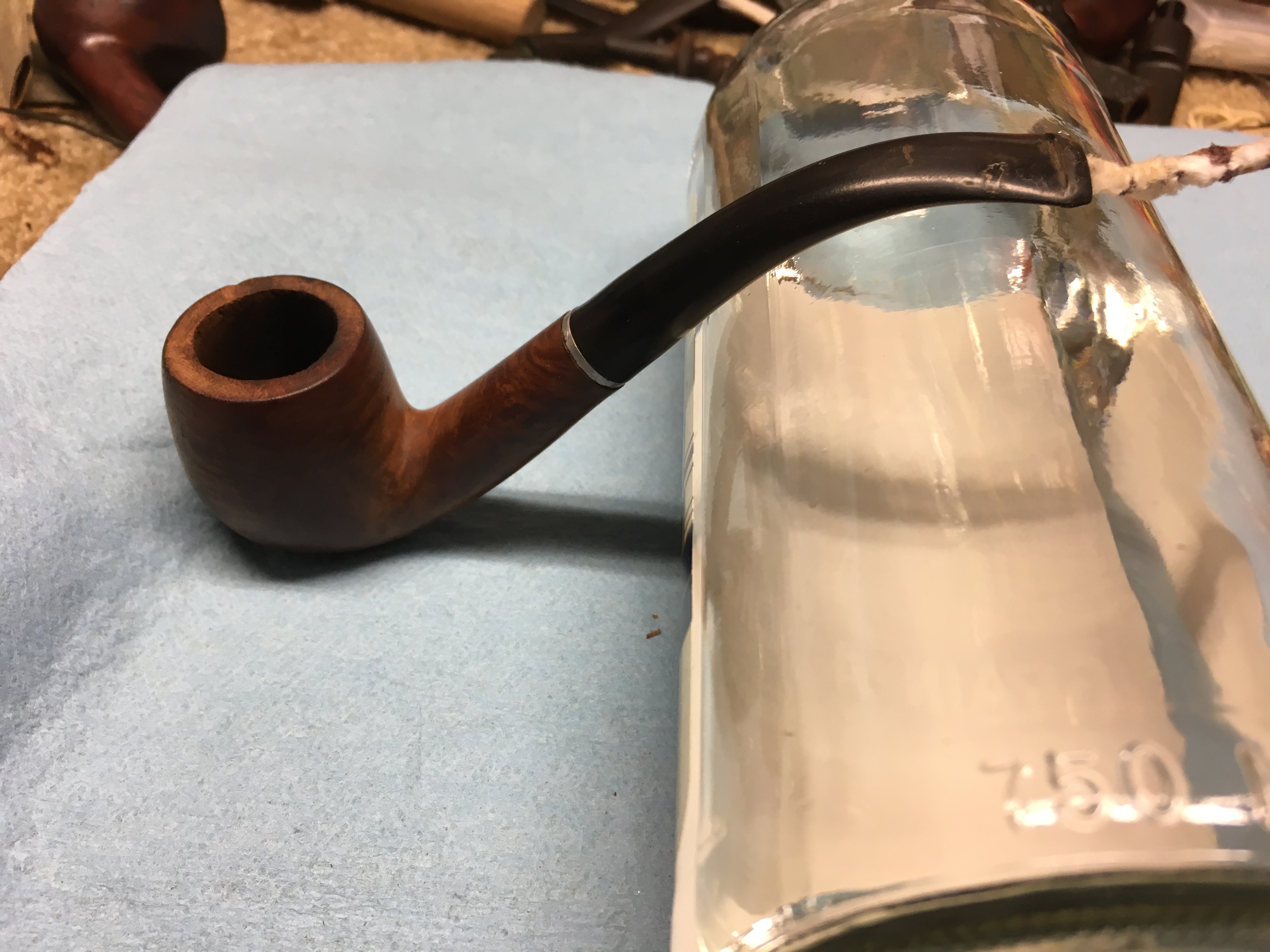






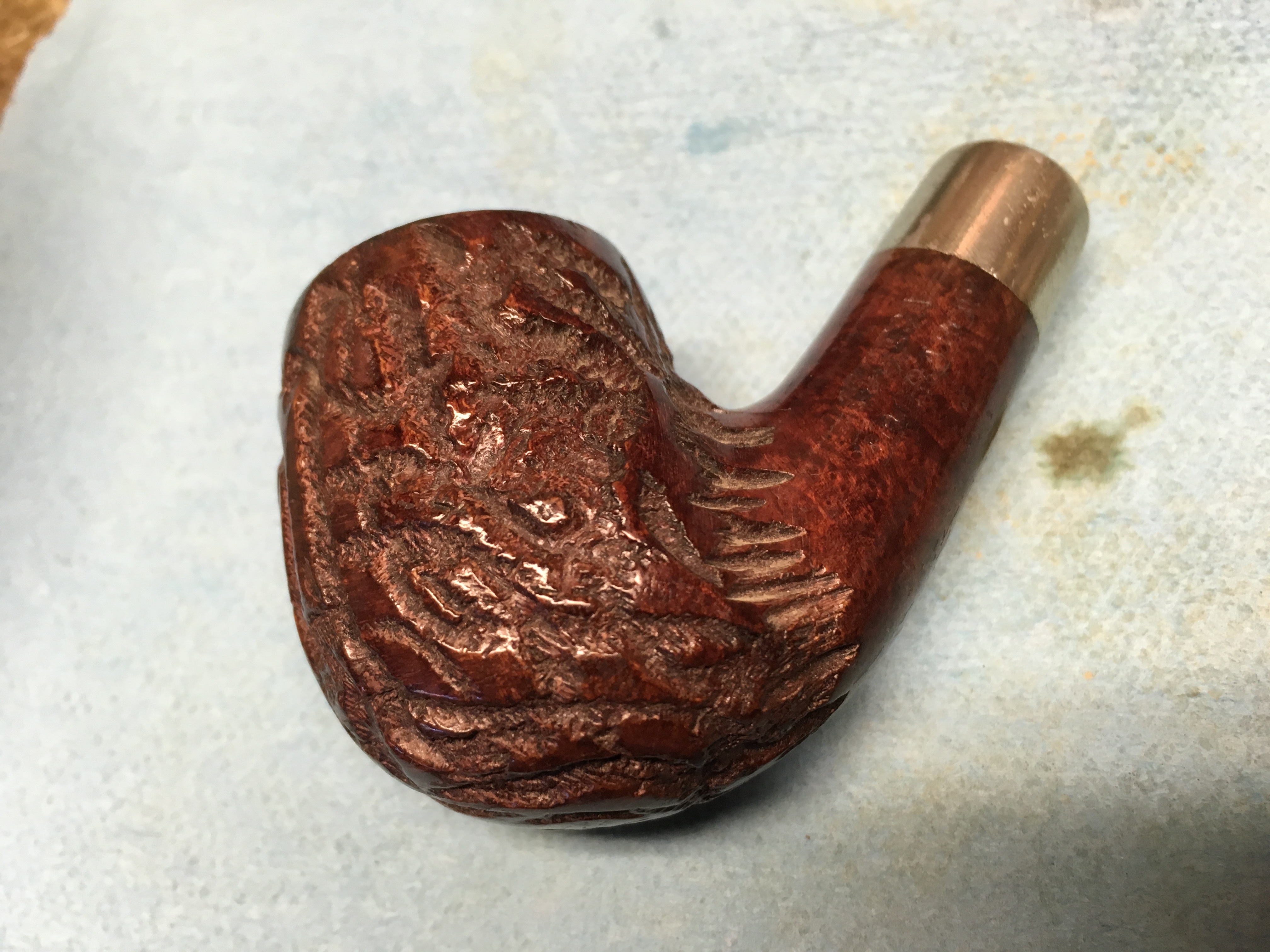

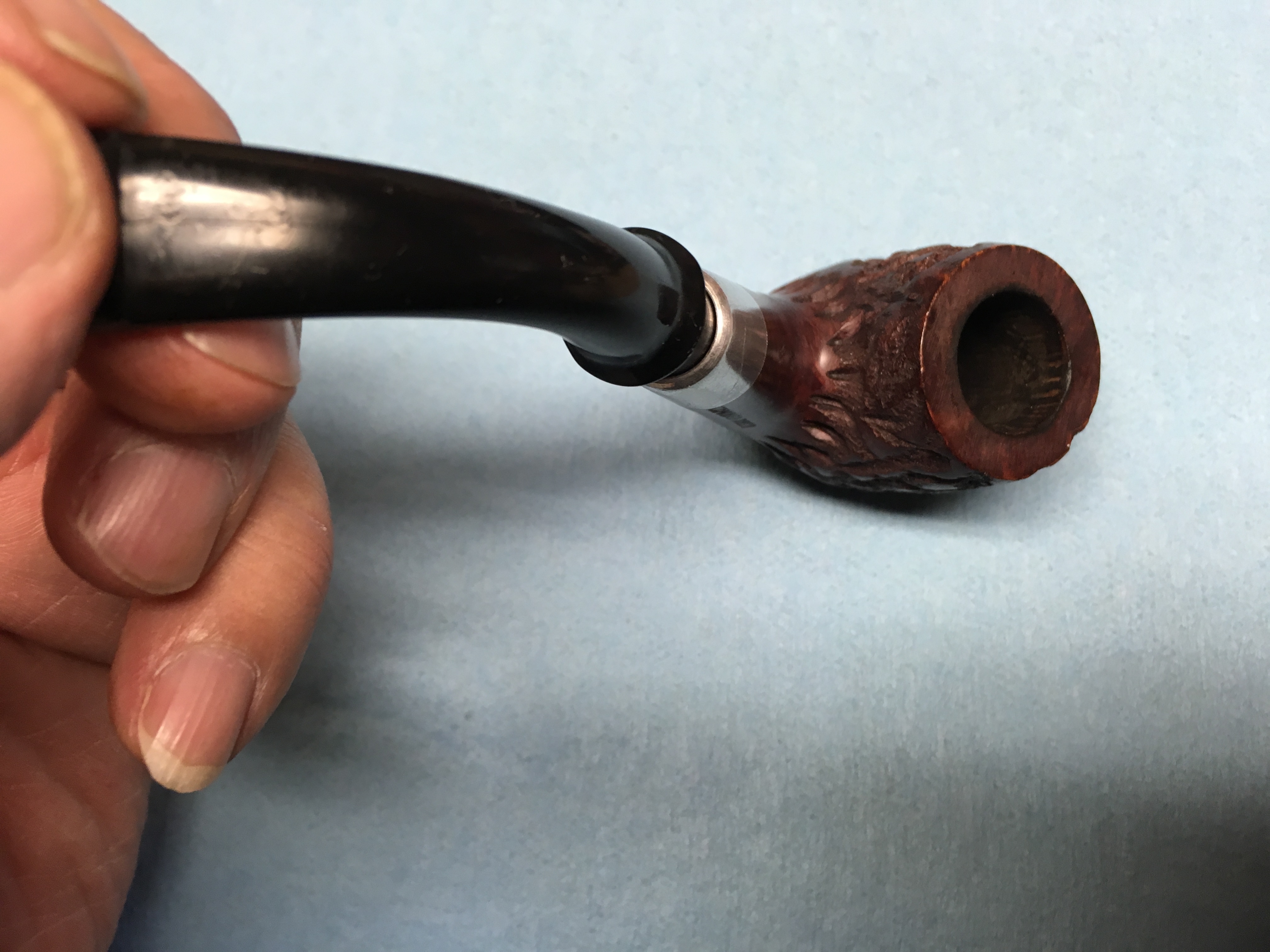

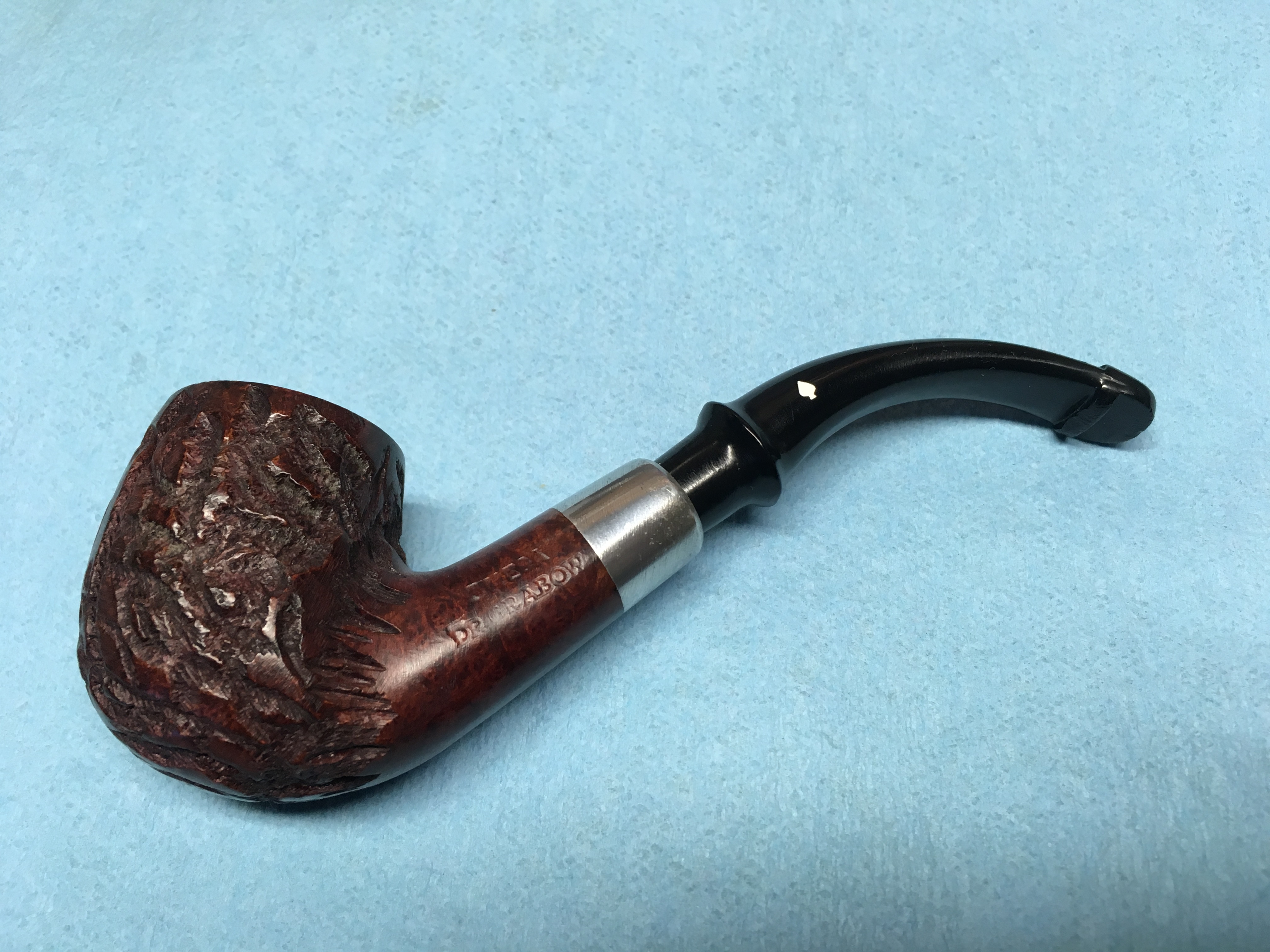


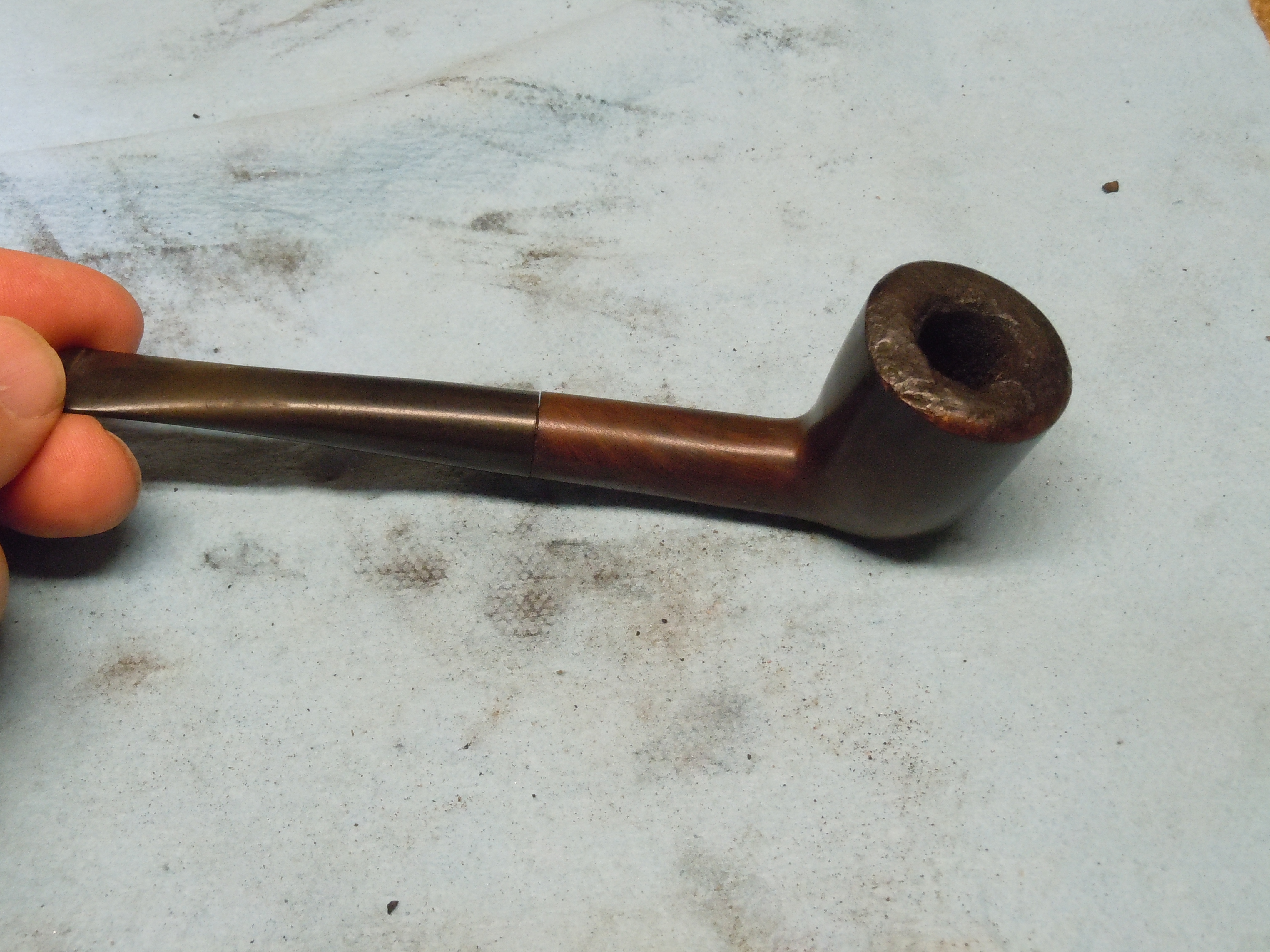
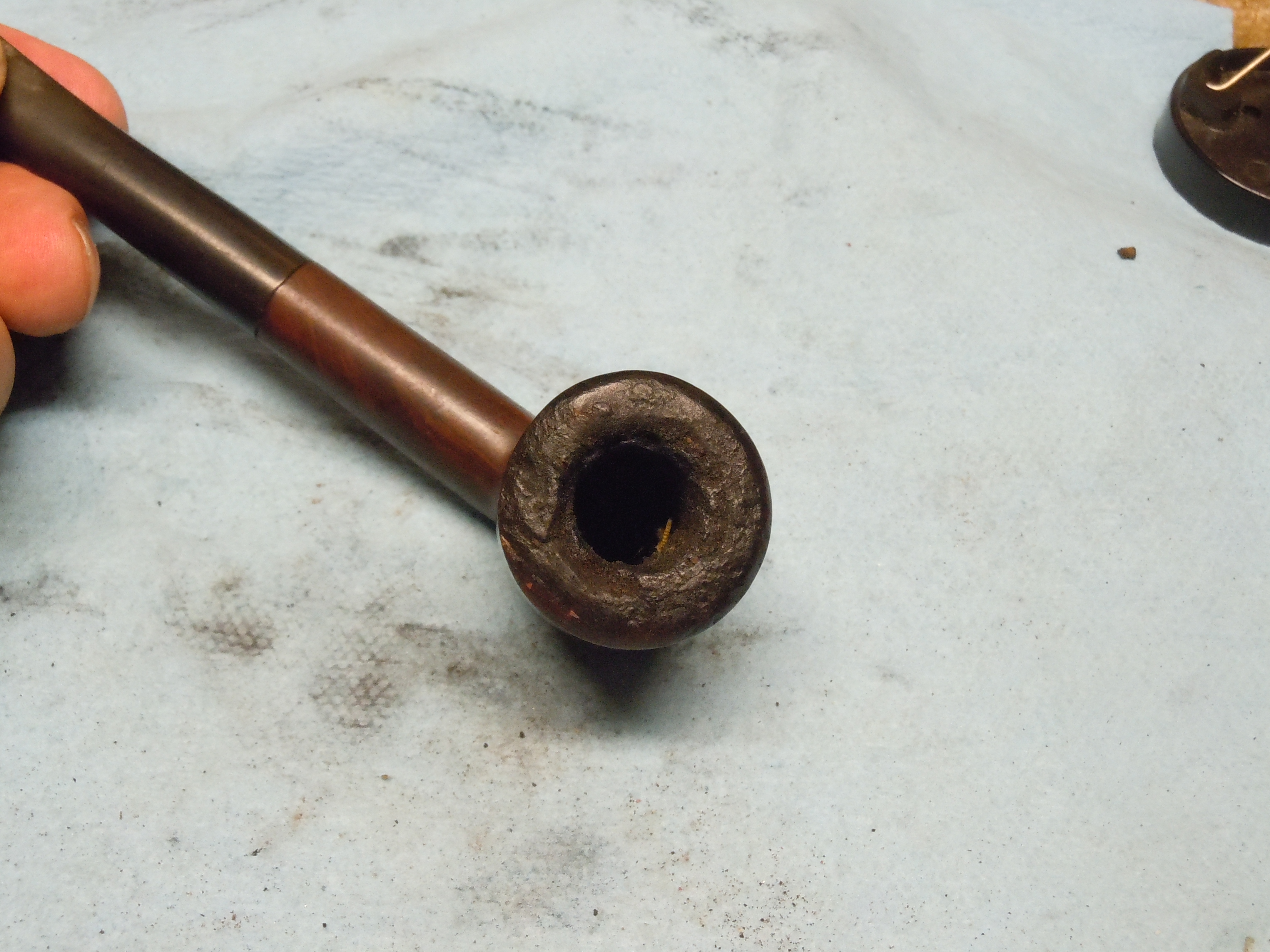 You can see by the rim the damage done. When I removed the stem I found a surprise inside. A metal tube with a threaded insert baffle. It would not pass a pipe cleaner.
You can see by the rim the damage done. When I removed the stem I found a surprise inside. A metal tube with a threaded insert baffle. It would not pass a pipe cleaner.
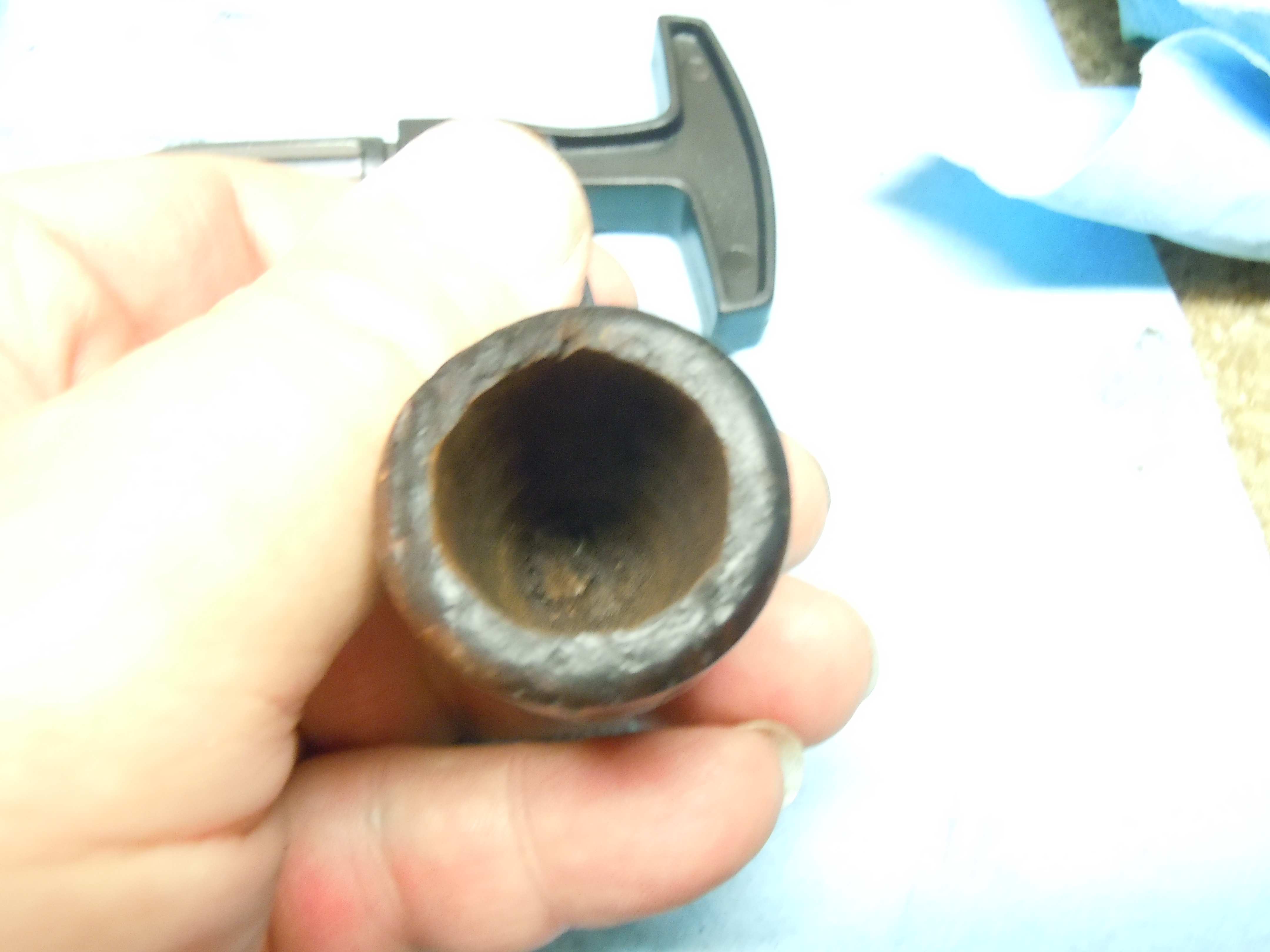

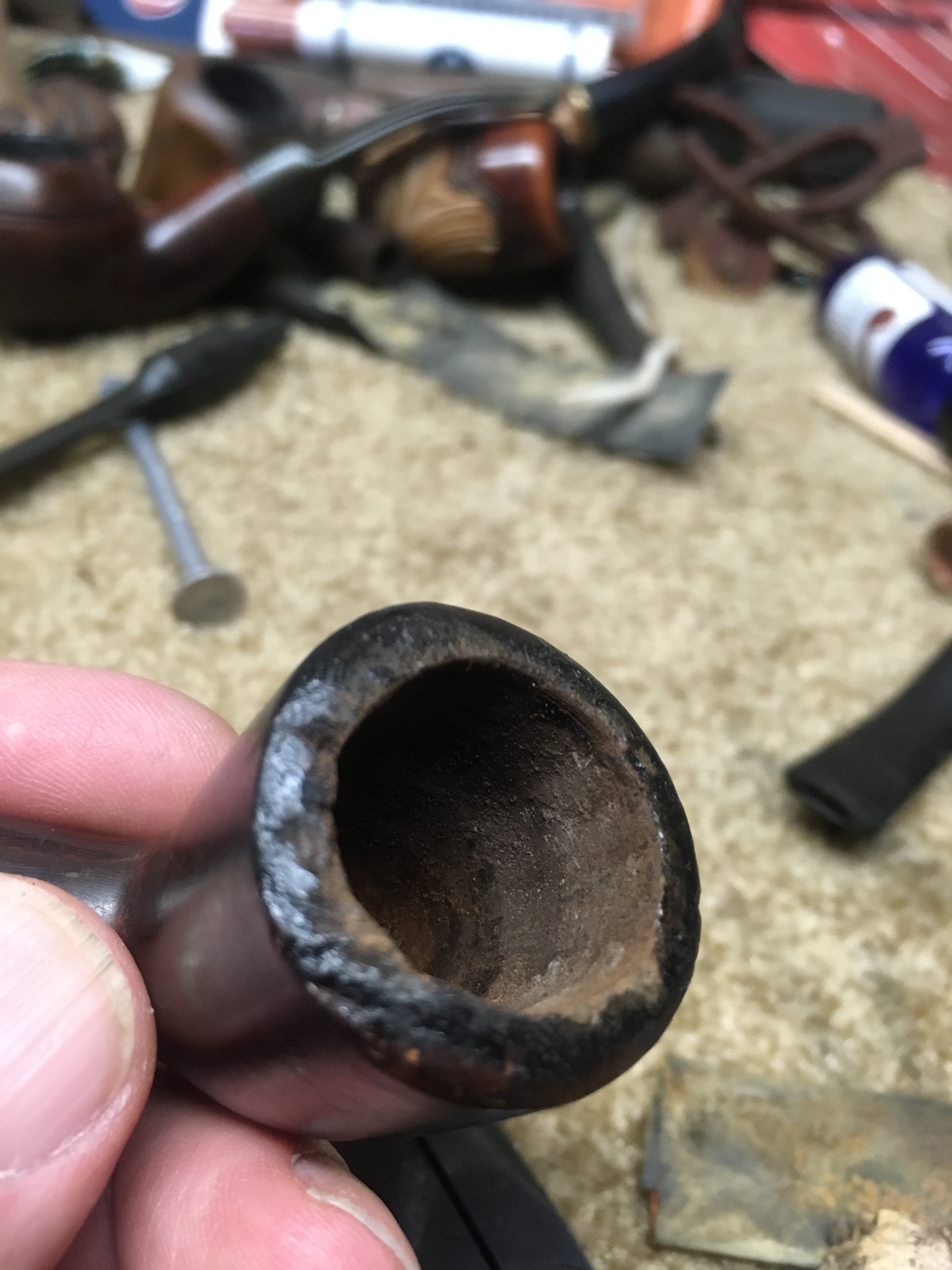


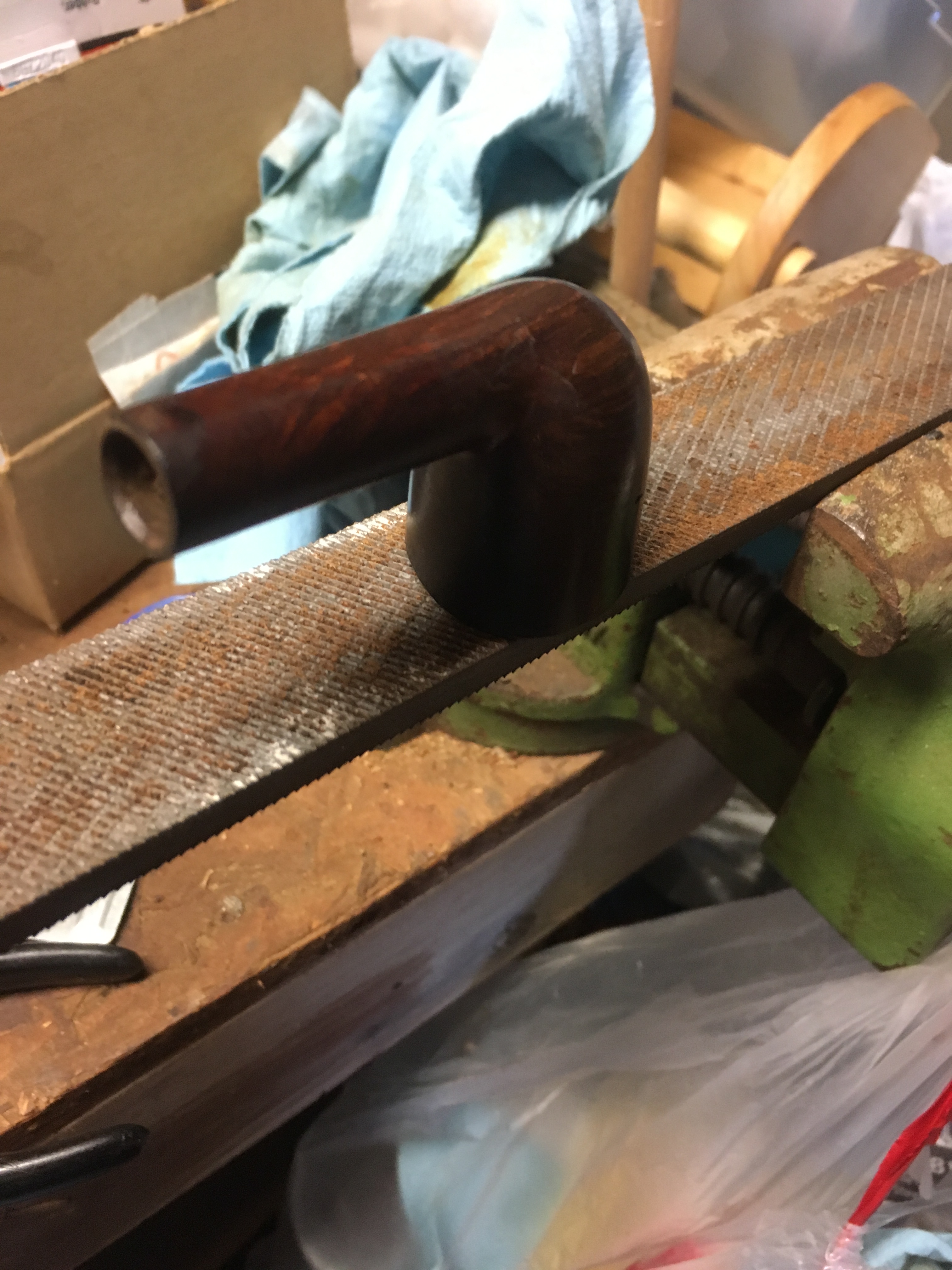


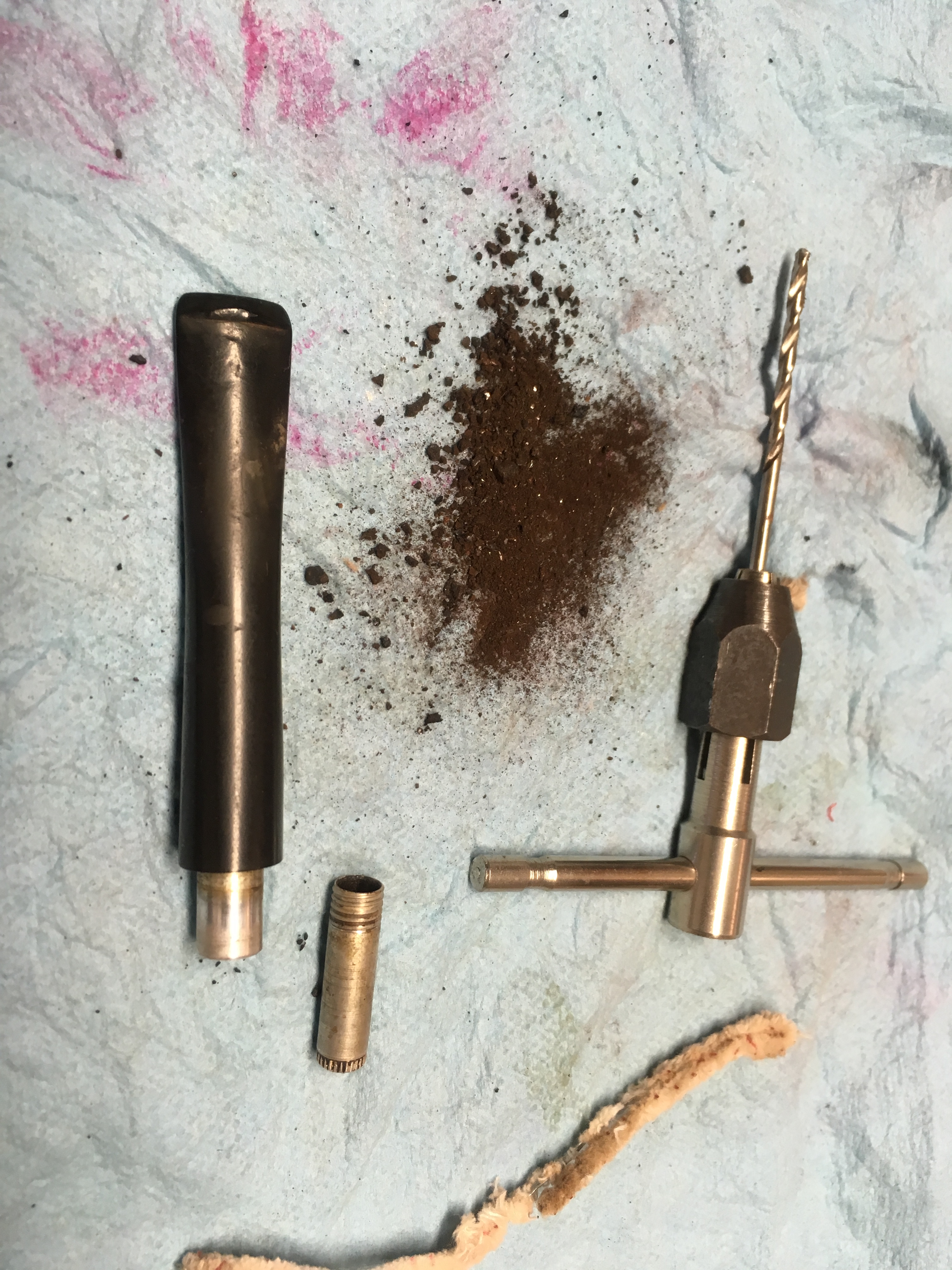







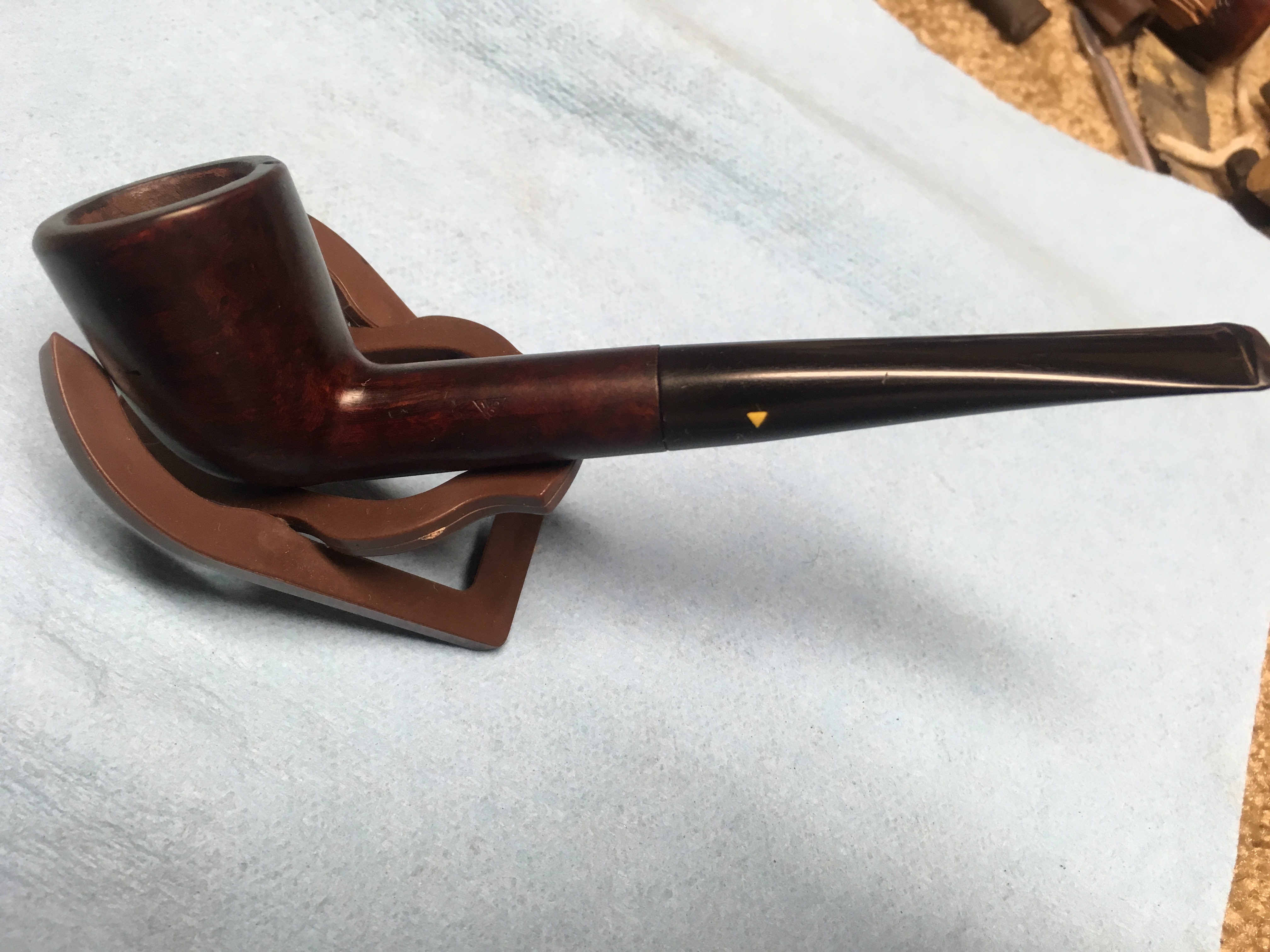


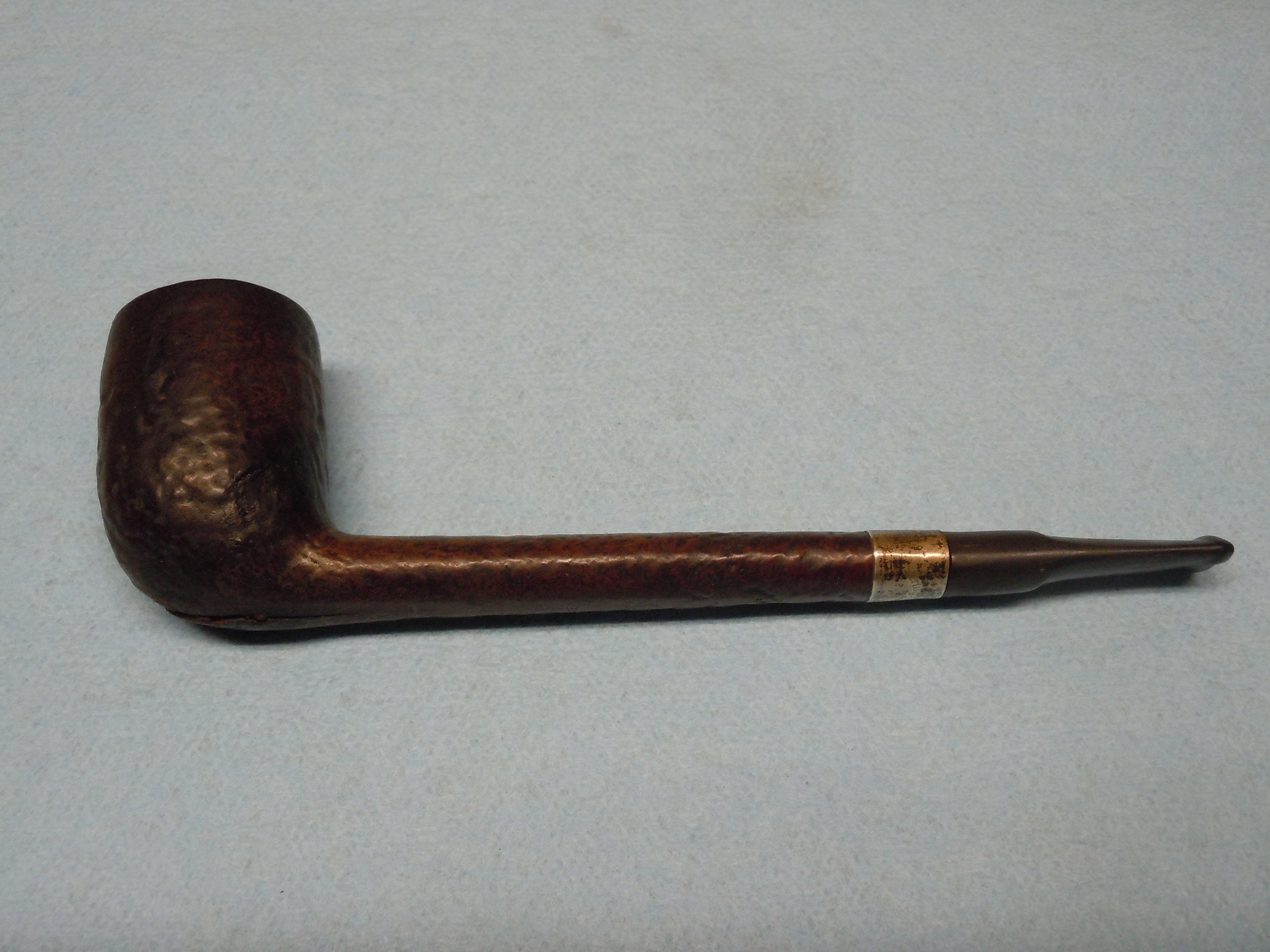
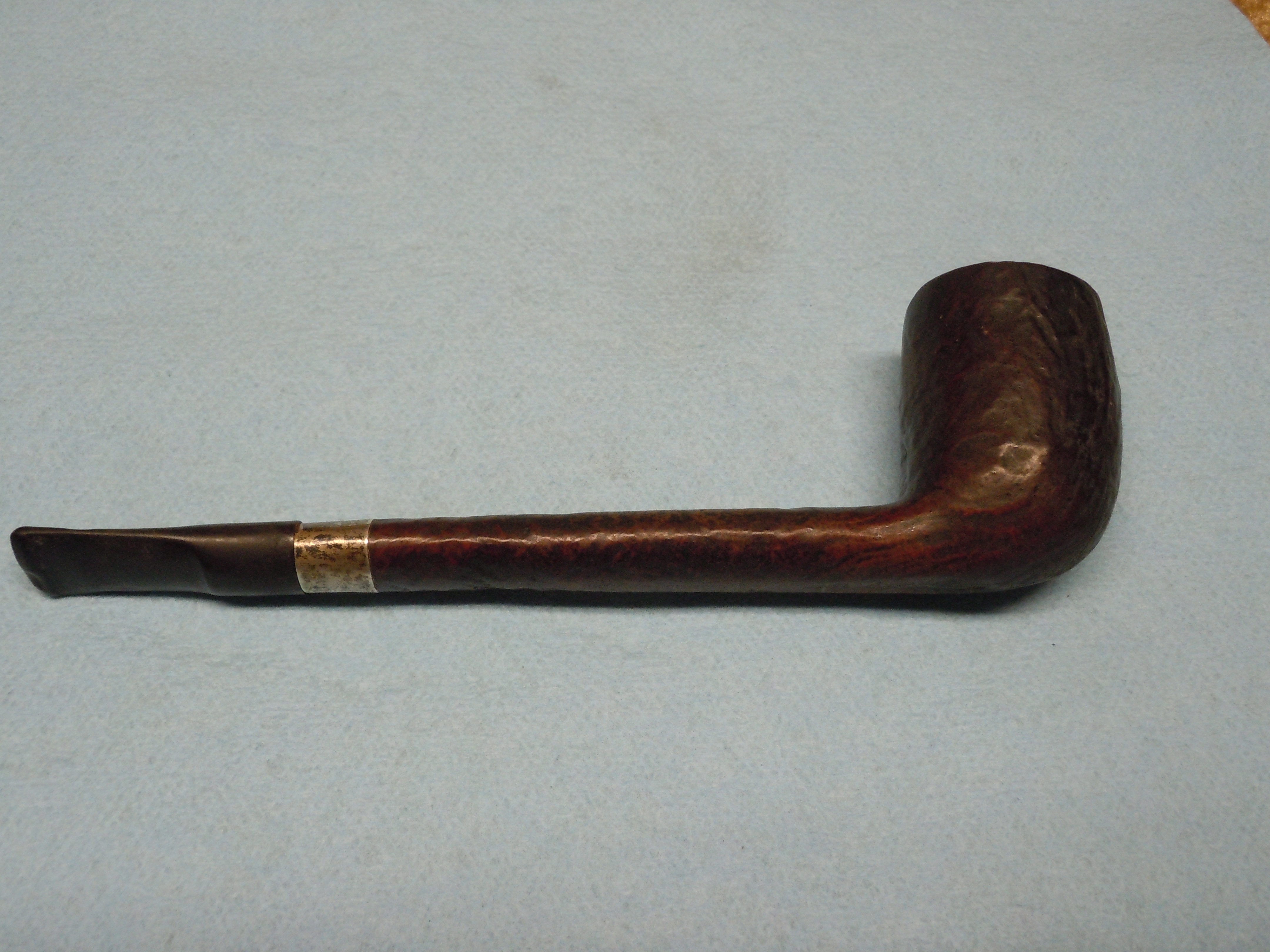

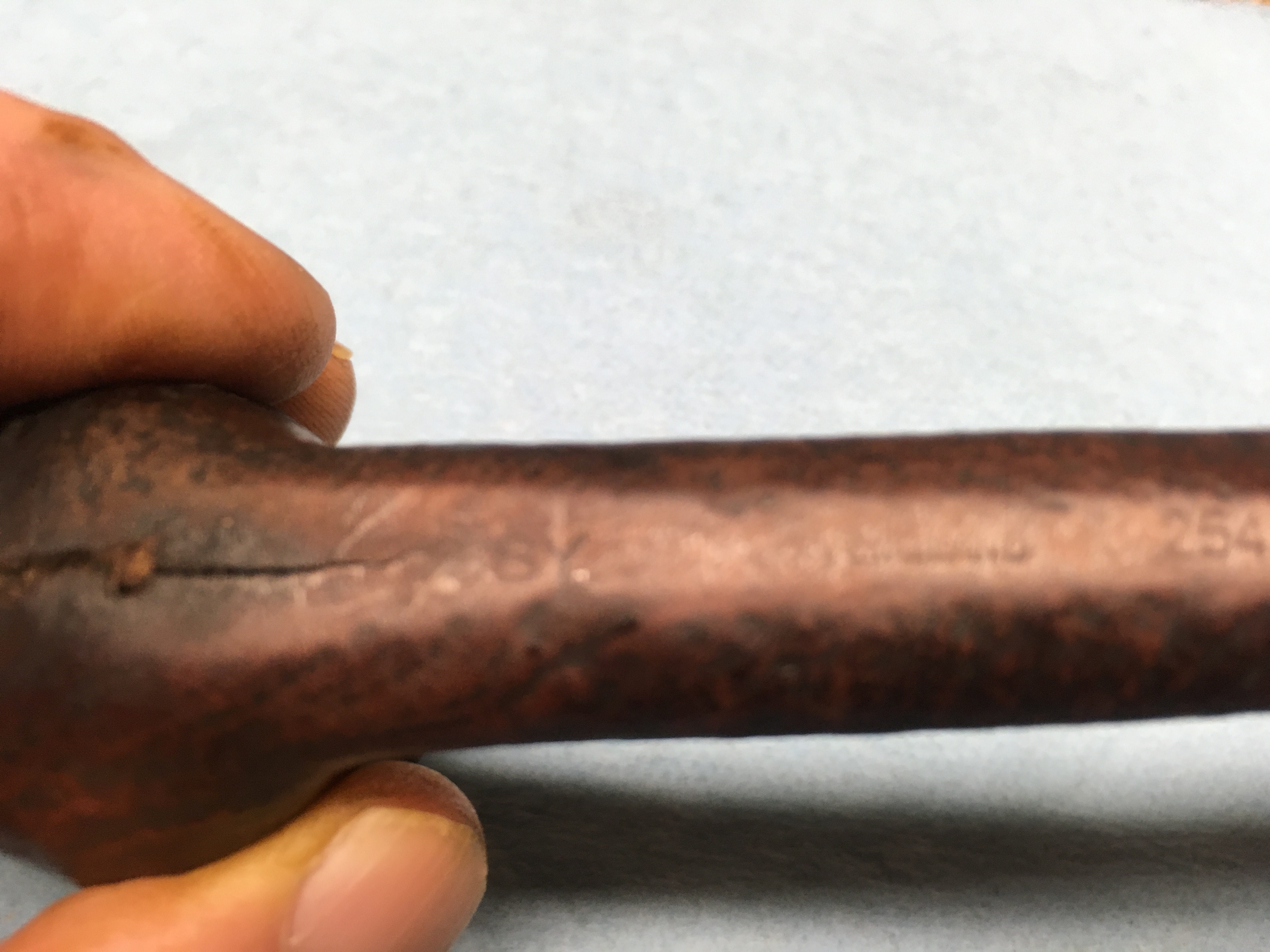


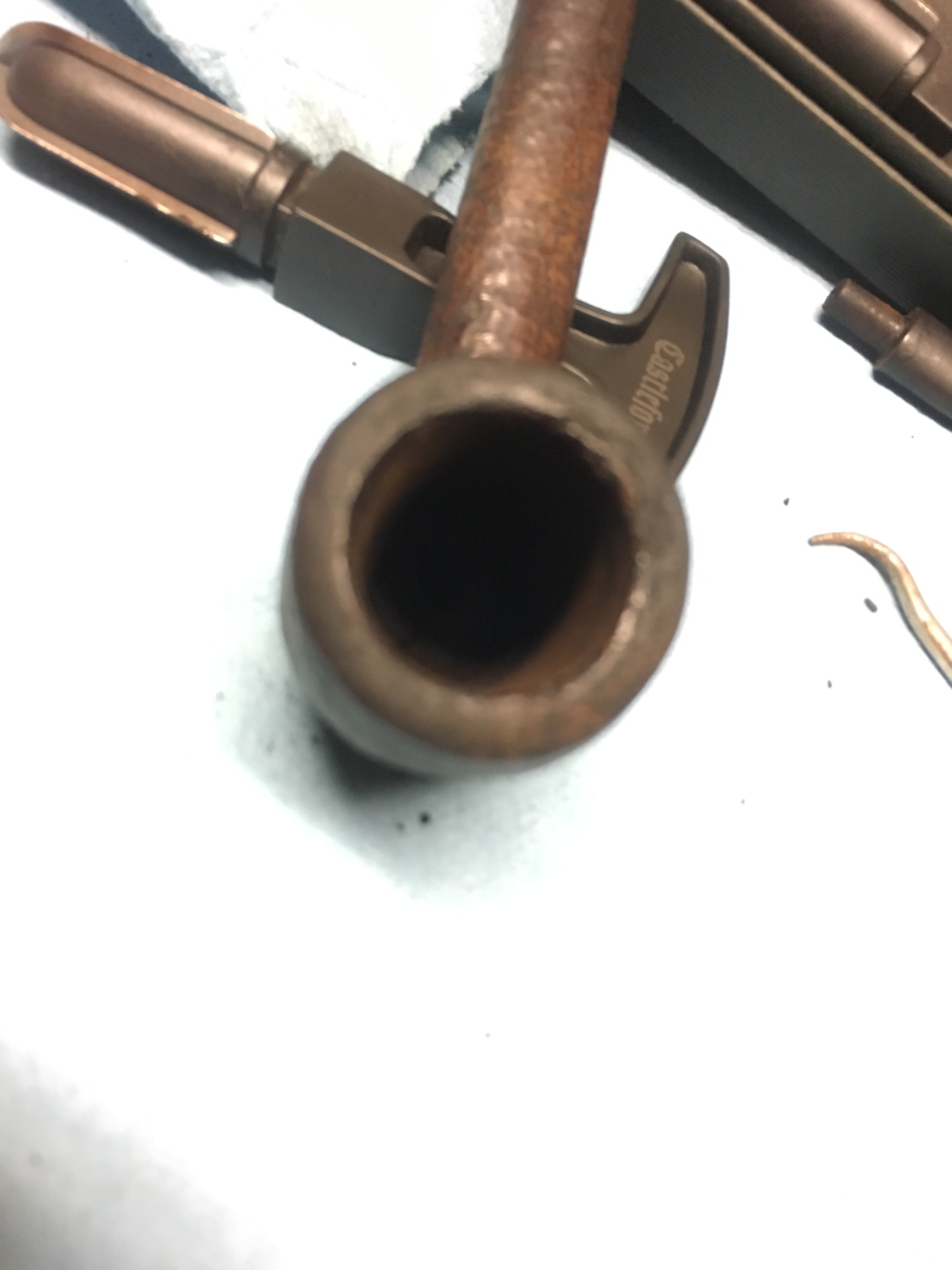


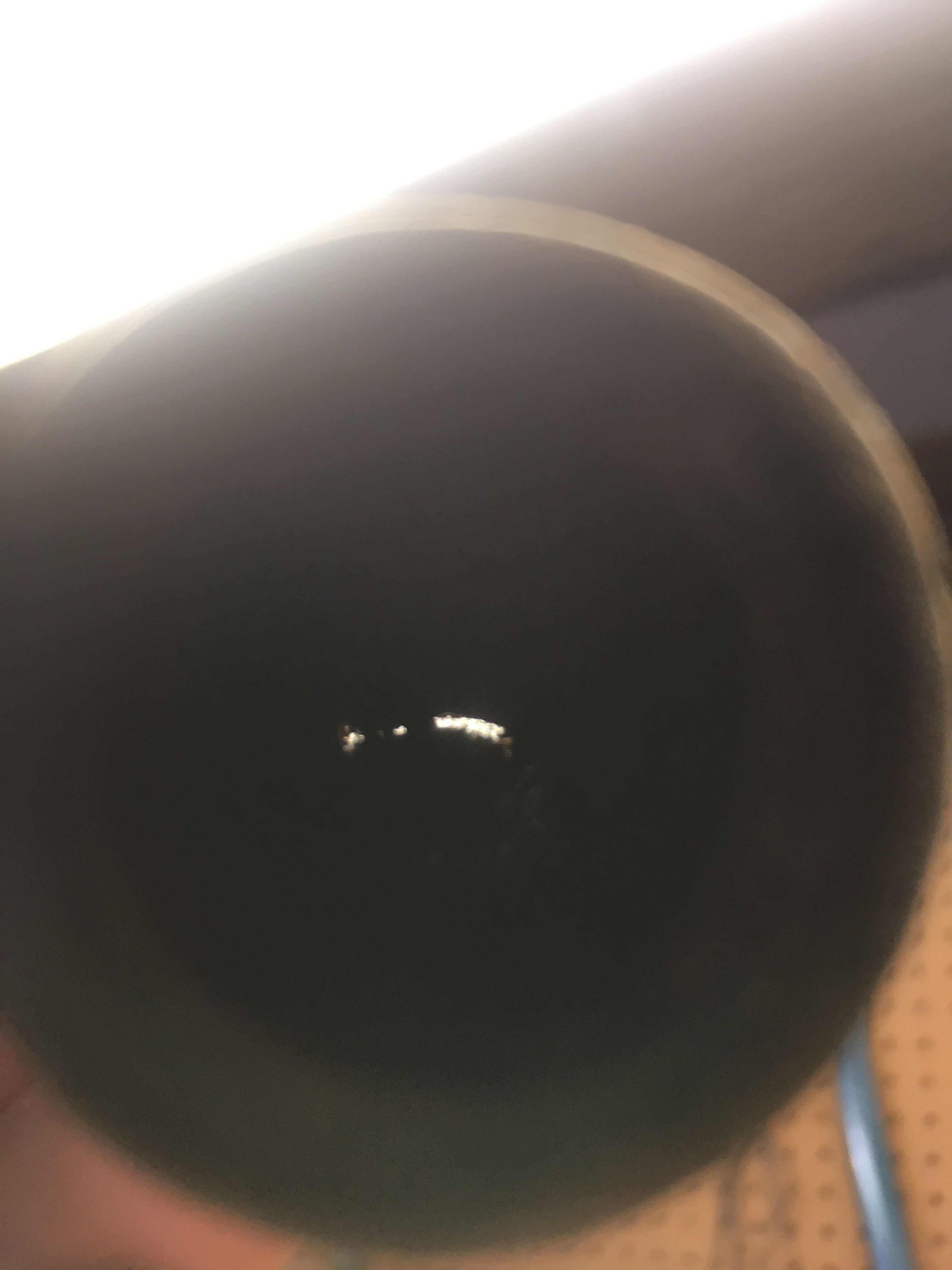 After the reaming was done I pulled the plug out of the crack and found it went all the way through the briar. Using a small hand drill I went to each end of the crack and drilled a small hole to terminate the crack. I’ve used this technique in the past when trying to repair metal, so, why not do it here to try to stop the spread? I used a pick to clean out as much loose material I could to give the patch something to hold on to.
After the reaming was done I pulled the plug out of the crack and found it went all the way through the briar. Using a small hand drill I went to each end of the crack and drilled a small hole to terminate the crack. I’ve used this technique in the past when trying to repair metal, so, why not do it here to try to stop the spread? I used a pick to clean out as much loose material I could to give the patch something to hold on to.
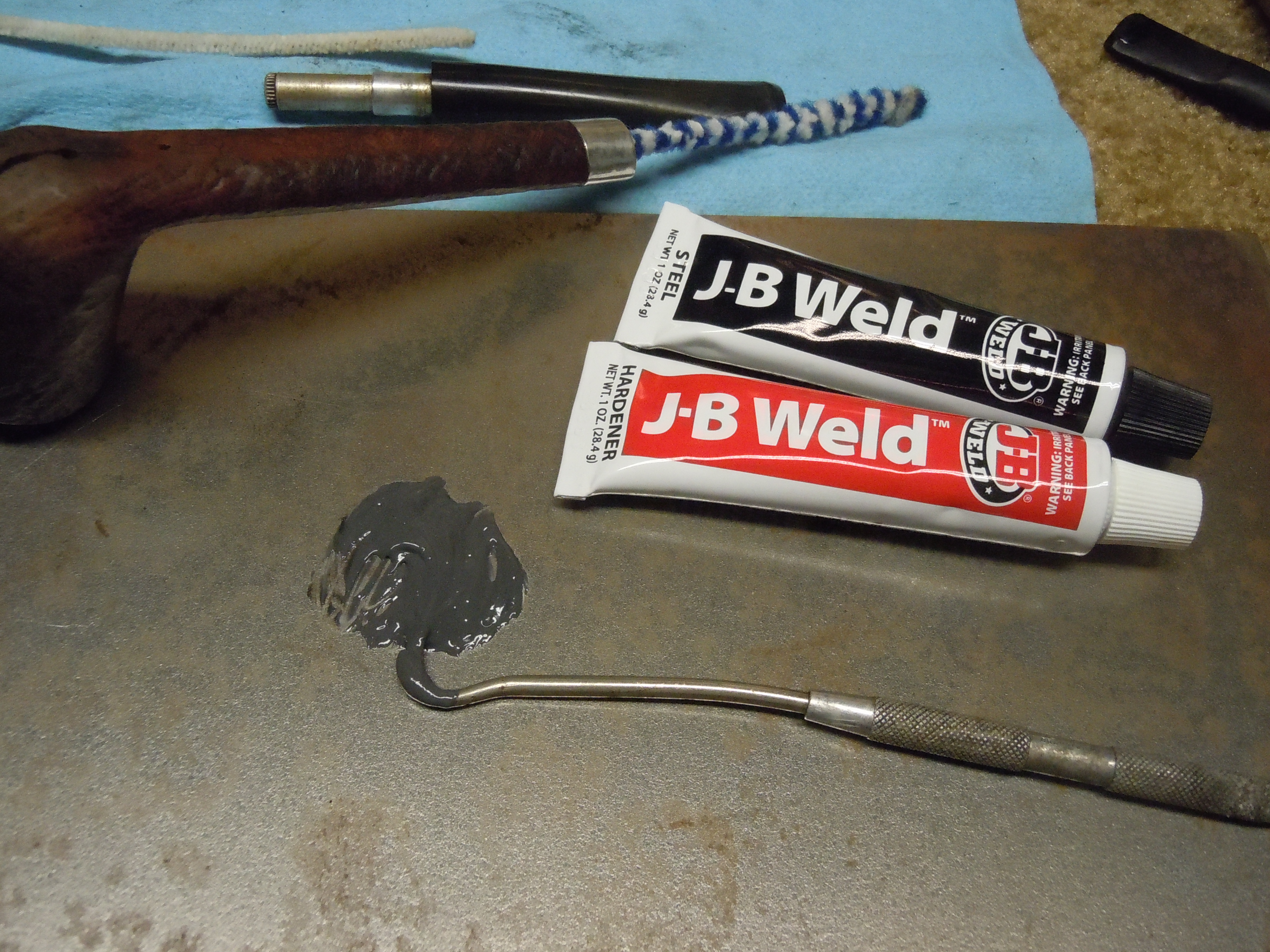










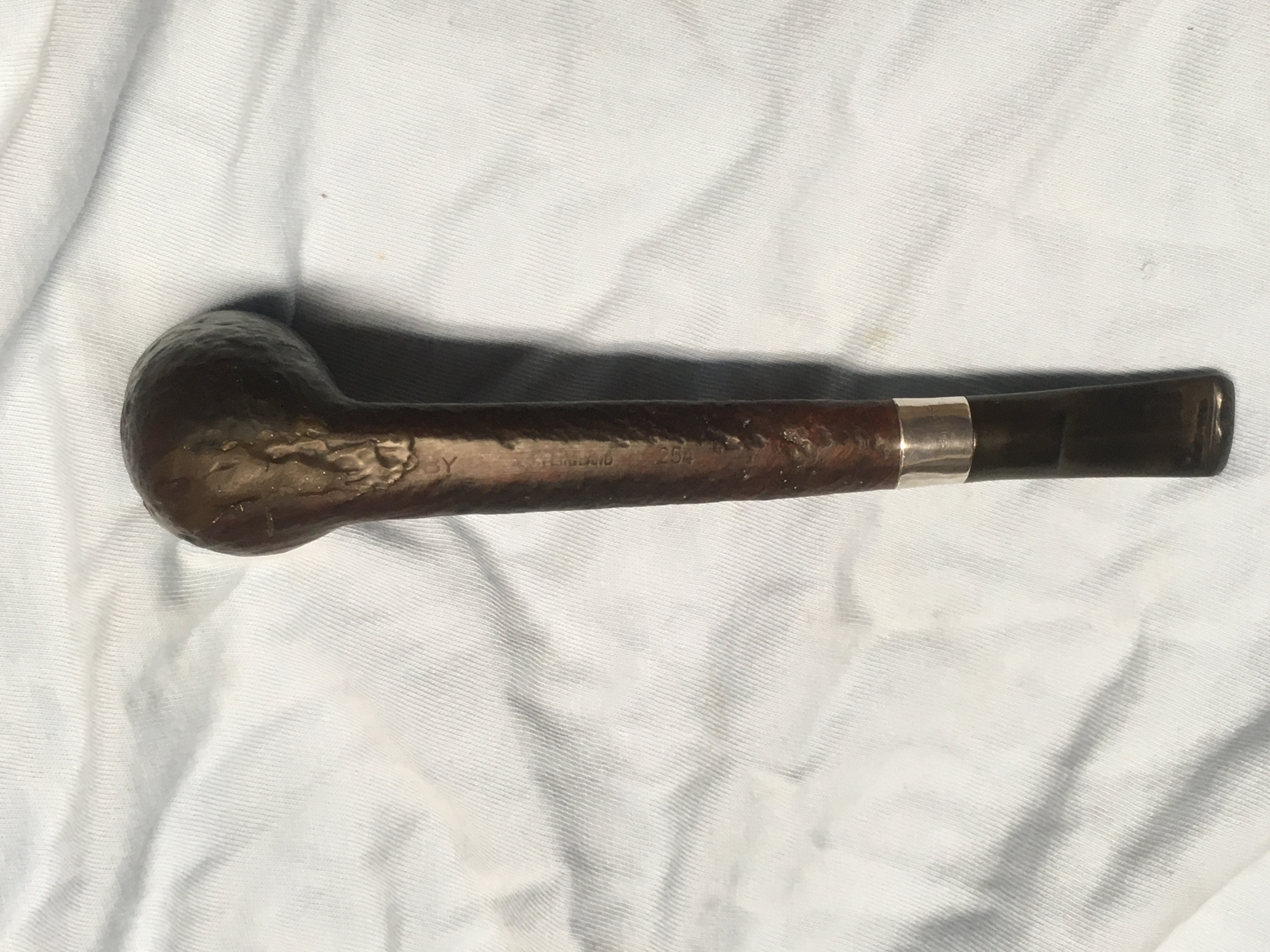
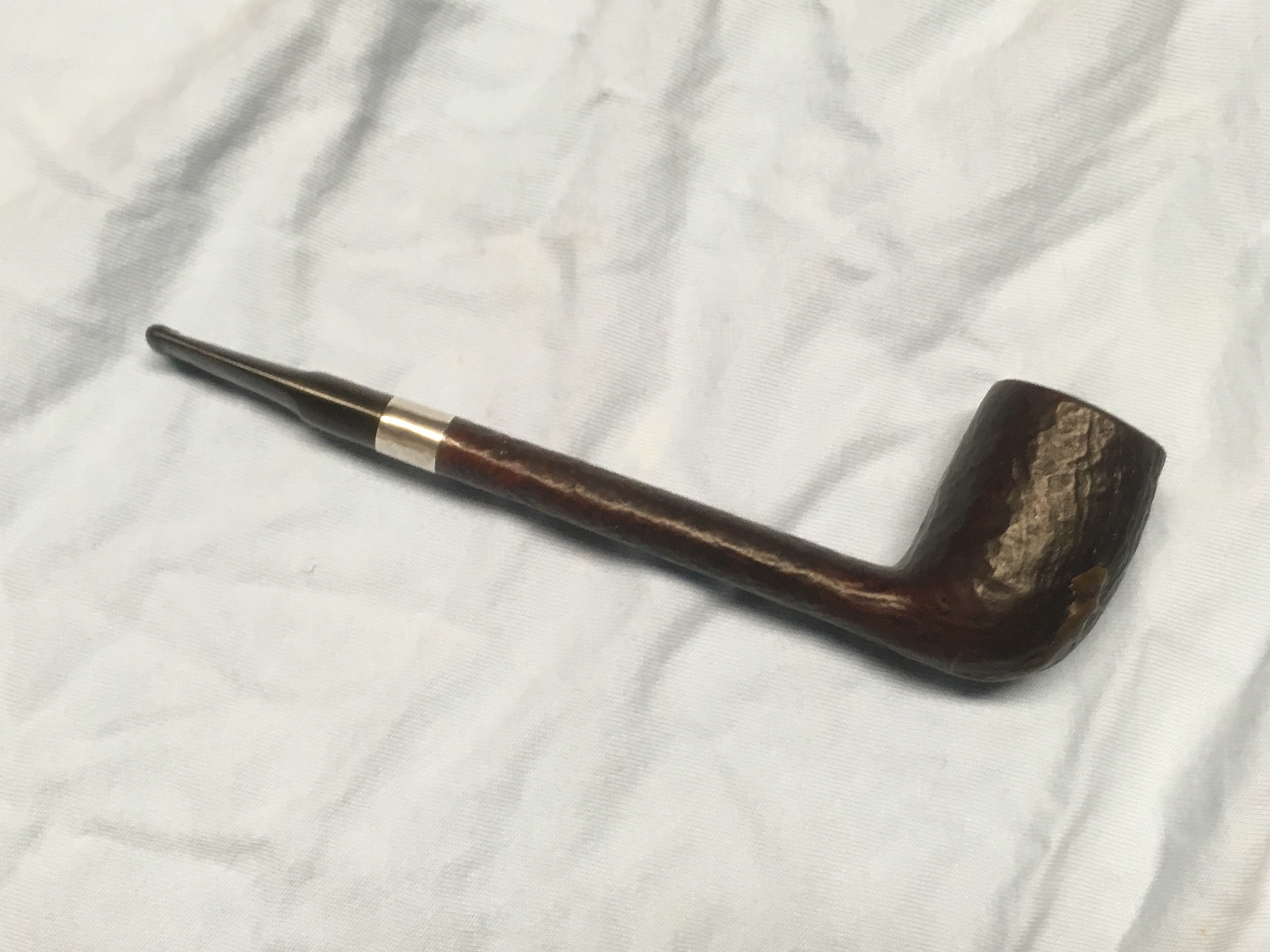





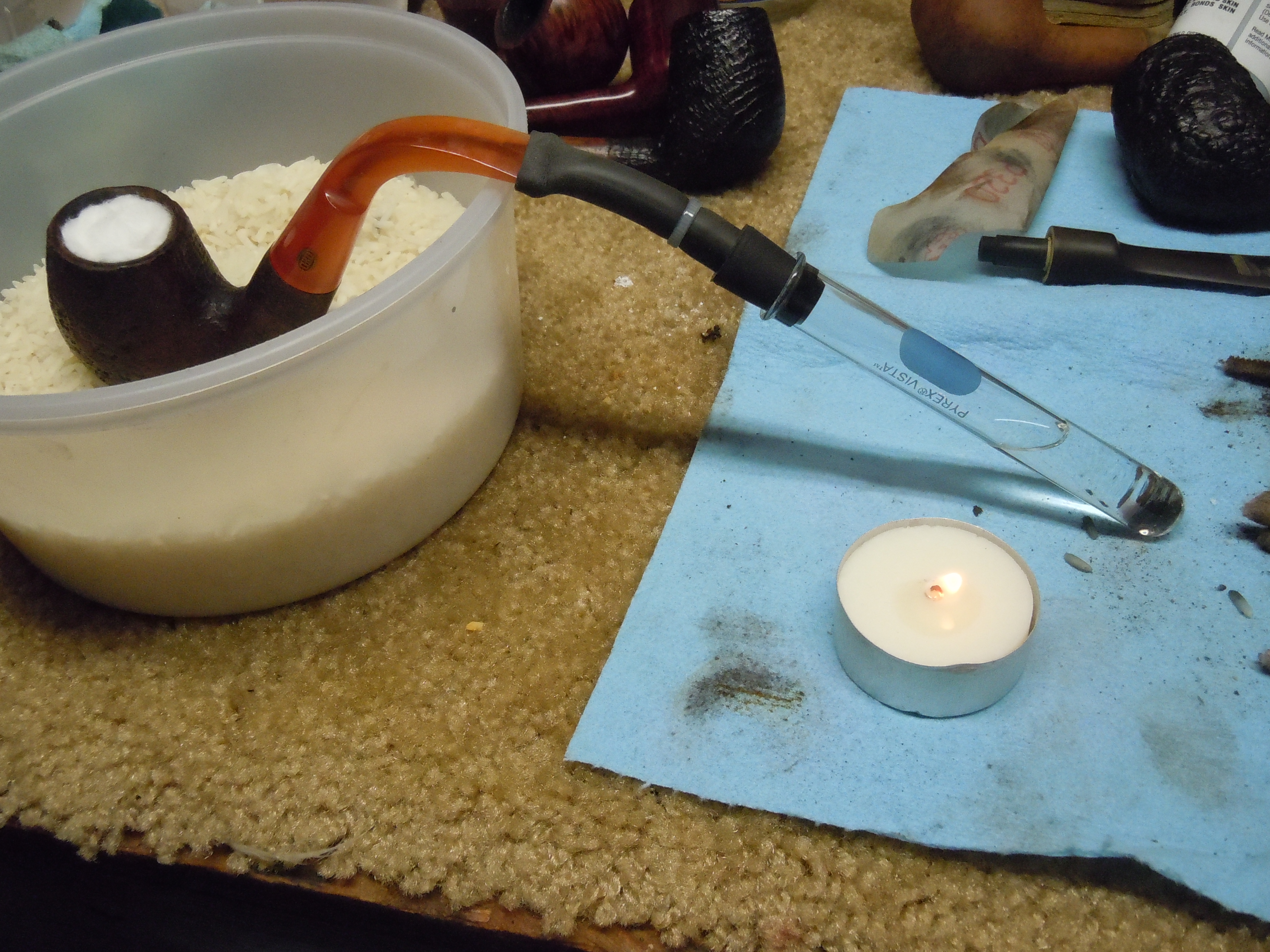





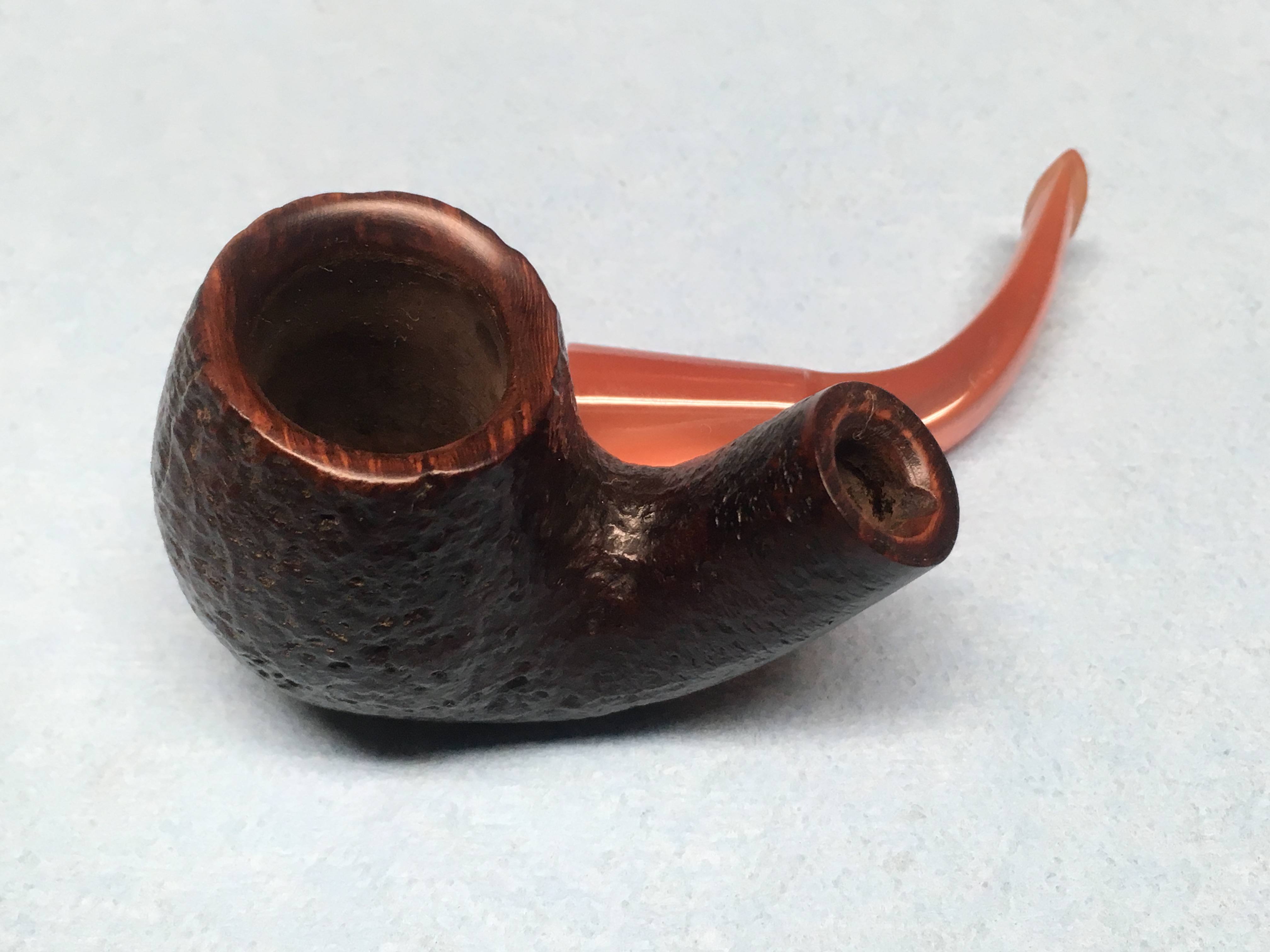 Once all cleaned I used some light brown leather dye to even out the color. And just buffed it on the wheel. This was a pleasure to do and it is a joy to smoke!
Once all cleaned I used some light brown leather dye to even out the color. And just buffed it on the wheel. This was a pleasure to do and it is a joy to smoke!







